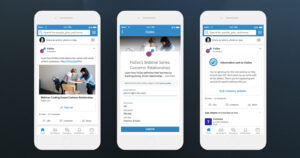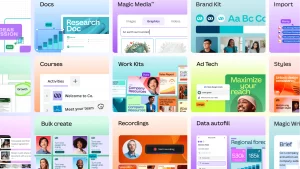
In today’s digital age, even the most creative and talented graphic design agencies can’t rely solely on their artistic prowess to thrive. To stand out in a competitive market, they need a strategic approach to attract and retain clients. This is where digital marketing comes in. At Clickyowl, we specialize in helping graphic designers and design agencies elevate their brand, enhance their online presence, and generate quality leads. In this blog, we’ll explore why digital marketing is indispensable for graphic design agencies and how it can transform your business. Here are 7 Winning Digital Marketing Strategies For Graphic Design Agencies
Build a amazing website for your graphic design agency
Creating an amazing website for your graphic design agency involves a blend of aesthetic appeal, functional design, and strategic content. The first step is defining your brand identity, starting with a memorable logo and a cohesive color scheme that reflects your agency’s personality. Typography is equally important; selecting readable and stylish fonts will enhance the visual appeal.
Planning the structure of your website is crucial. Your homepage should be engaging and visually captivating, presenting a clear value proposition that grabs attention immediately. Include a hero section with a striking image or video, accompanied by a compelling headline and a call-to-action (CTA) button. Highlight a few standout projects to showcase your portfolio, and feature client testimonials to build credibility.
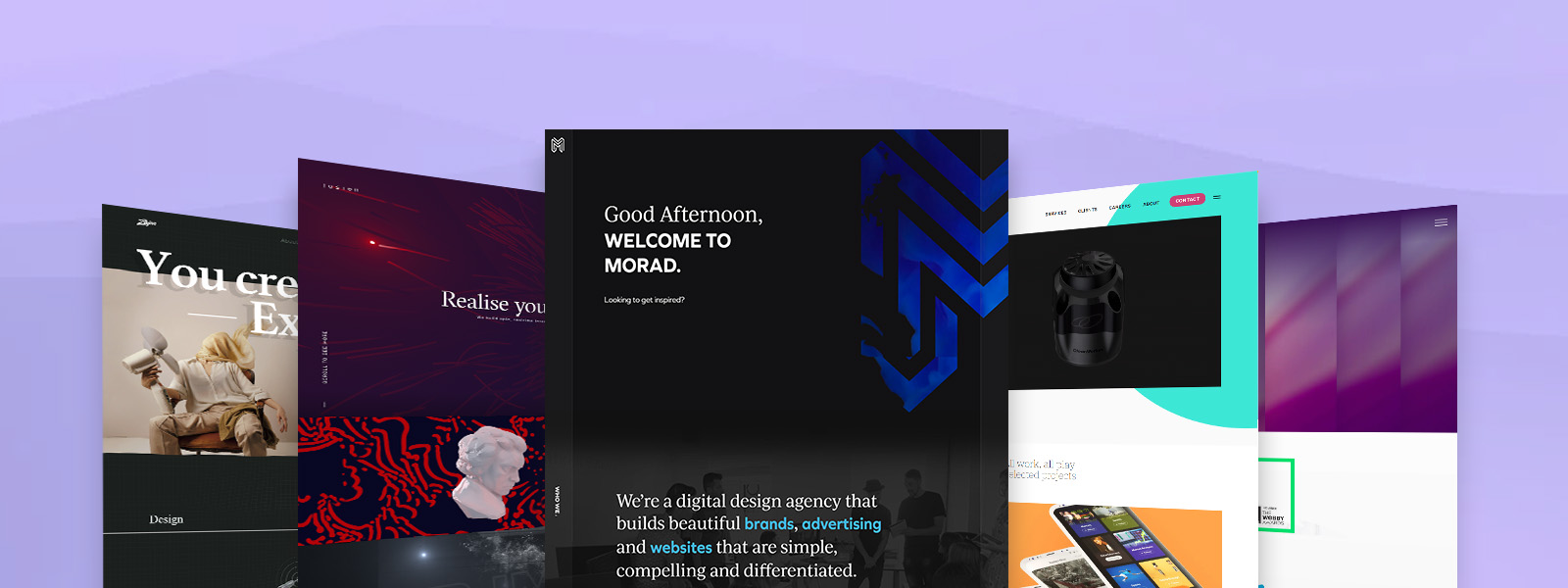
Your About Us page should tell your agency’s story, outlining your mission, values, and what sets you apart from competitors. Introduce your team with professional photos and bios to create a personal connection with your audience. The Services page should detail each service you offer with clear descriptions and visual examples. Organize your portfolio by categories such as branding, web design, and print design. Provide detailed case studies that highlight the problem, solution, and results for each project.
A blog is an excellent way to share industry insights, design tips, and updates about your agency. Regularly posting high-quality content will engage your audience and improve your site’s SEO. Ensure your blog is well-organized and easy to navigate, with SEO best practices implemented to increase visibility.
The Contact page should be straightforward, featuring clear contact information and a simple form. If you have a physical location, include a map and your operating hours. Make it easy for potential clients to get in touch by providing multiple contact options.
In terms of design, aim for a clean and modern aesthetic that highlights your work without clutter. Use high-resolution images and graphics to make your portfolio stand out. Ensure your site is user-friendly, with intuitive navigation and a responsive design that looks great on all devices. Technical aspects like SEO, fast loading speed, and security are also essential. Optimize your site with relevant keywords, ensure it loads quickly, and implement security measures like SSL certificates.
A well-designed homepage might include a hero section with a bold headline like “Transforming Ideas into Visual Masterpieces,” along with a CTA button that says “View Our Work.” A brief About Us preview can lead visitors to the full About Us page. Featured project thumbnails with links to the Portfolio page and a carousel of client testimonials can further engage visitors. The footer can provide contact information, social media links, and a newsletter signup form.
On the About Us page, narrate your agency’s journey and highlight your core values and mission. Showcase team members with photos and bios to add a personal touch. The Services page can feature individual service blocks with icons, titles, and brief descriptions, linking to detailed service pages for more information.
The Portfolio page should display project thumbnails in a grid layout, with filter options to help users navigate by category. Each project should link to detailed case studies that provide a deeper insight into your work. The Blog page should list recent posts with excerpts and “read more” links, and include a sidebar with blog categories for easy navigation.
Finally, the Contact page should feature a simple form with fields for name, email, subject, and message. If you have a physical location, embedding a Google Map can be helpful. Additional contact information like phone numbers, email addresses, and social media links should also be included.
By integrating these elements, you can create a stunning and effective website for your graphic design agency that showcases your work, attracts potential clients, and ultimately drives business growth. This is one of the most crucial part of the 7 Winning Digital Marketing Strategies For Graphic Design Agencies
Use Google My Business for building a presence in your local market
Building a presence in your local market is essential for a graphic design agency, and Google My Business (GMB) offers a powerful platform to enhance visibility and attract more clients. To start, visit the Google My Business website and sign in with your Google account. If your business is already listed, claim it; otherwise, create a new listing. Make sure to enter your business name and address accurately, as consistency in your business name helps in brand recognition and maintaining a precise address ensures customers can find you easily.
Completing your profile is the next crucial step. Provide your business name consistently with your branding, a precise address, and a contact number where potential clients can reach you. Add your website URL to direct traffic to your site, and choose the correct business category to help Google understand what services you offer.
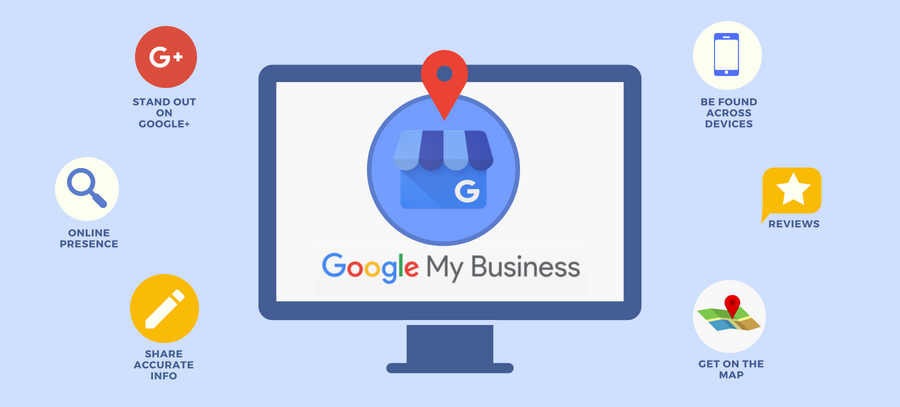
Your business description should be compelling and informative. Describe what makes your graphic design agency unique, the services you offer, and any specializations. Highlight key points that differentiate your business from competitors, such as unique design styles or specific client industries you cater to.
Adding photos is vital. High-quality images of your work, team, and office can significantly enhance your profile. Showcase some of your best design projects to give potential clients a sense of your capabilities and style. Regularly updating your photos keeps your profile fresh and engaging.
Collecting and responding to reviews is another critical aspect. Encourage satisfied clients to leave positive reviews, as these enhance your credibility and influence potential clients. Responding to reviews, whether positive or negative, shows that you value client feedback and are committed to excellent customer service.
Utilize GMB’s posts feature to share updates, offers, and events. Regularly posting about new projects, special promotions, or upcoming events keeps your audience engaged and informed about what’s happening at your agency. These posts appear in your business profile and can attract more attention to your services.
Ensure your business hours are accurate and up-to-date. This helps clients know when they can reach you and avoids any frustration from outdated information. If your hours change for holidays or special events, update them accordingly.
GMB also offers insights into how customers find and interact with your business. Use these analytics to understand your audience better and adjust your marketing strategies. For instance, if you notice a spike in profile visits after a particular type of post, consider creating more similar content.
Promoting special offers and events through GMB can draw in local clients. Whether it’s a discount on first-time design services or an open house event at your office, these promotions can attract new business and increase your local market presence.
By fully utilizing Google My Business, you can significantly boost your local market presence. Completing and regularly updating your profile, engaging with clients through reviews and posts, and using the insights provided by GMB can help your graphic design agency attract and retain more local clients, ultimately driving growth and success. Definitely don’t overlook this tip in the 7 Winning Digital Marketing Strategies For Graphic Design Agencies
Leverage social media to build a brand & promote your work
Leveraging social media to build a brand and promote your work as a graphic design agency involves creating a cohesive and engaging online presence across various platforms. Start by identifying the social media channels most relevant to your audience, such as Instagram, Facebook, LinkedIn, Pinterest, and Twitter. Each platform has unique features and demographics, so tailor your content strategy to suit each one.
Begin with Instagram, which is particularly effective for visual content. Post high-quality images of your design projects, including behind-the-scenes shots, design process videos, and before-and-after transformations. Utilize Instagram Stories and Reels to share quick updates, tips, or sneak peeks of upcoming projects. Consistency is key; maintain a regular posting schedule to keep your audience engaged.

On Facebook, create a business page that serves as a hub for your agency’s information and updates. Share your portfolio, client testimonials, and case studies to build credibility. Engage with your audience through posts, comments, and messages. Facebook Ads can also be a powerful tool to reach a broader audience with targeted advertising based on demographics, interests, and behaviors.
LinkedIn is essential for connecting with other professionals and businesses. Share articles, industry insights, and your agency’s achievements. Participate in relevant groups and discussions to establish yourself as an expert in the field. LinkedIn is also a great platform to network with potential clients and collaborators.
Pinterest is a visual search engine that can drive significant traffic to your website. Create boards that showcase your portfolio, design inspiration, and client projects. Optimize your pins with relevant keywords and descriptions to increase their discoverability. This platform is particularly useful for sharing detailed infographics and mood boards.
Twitter allows for quick updates and engagement with industry trends. Share links to your latest blog posts, design news, and participate in design-related hashtags and conversations. Retweet and comment on content from other designers and industry leaders to increase your visibility.
Across all platforms, ensure your branding is consistent. Use the same logo, color scheme, and tone of voice to create a cohesive brand identity. Engage with your followers by responding to comments and messages promptly. Host Q&A sessions, run contests, and conduct polls to increase interaction and build a community around your brand.
Content is king, so focus on creating valuable and engaging content that showcases your expertise and creativity. Share tips, tutorials, and insights related to graphic design. Highlight your unique design process and the benefits of working with your agency. Case studies and client testimonials can provide social proof and attract new clients.
Collaborate with influencers and other businesses to expand your reach. Partnering with complementary brands or influencers can introduce your work to a new audience and build credibility. Guest posts, joint giveaways, or co-hosted webinars are effective collaboration strategies.
Use analytics tools provided by each social media platform to track your performance. Analyze which posts receive the most engagement, what times your audience is most active, and which types of content drive the most traffic to your website. Use these insights to refine your strategy and improve your results over time.
Building a brand and promoting your work on social media requires a strategic and consistent approach. By identifying the right platforms, creating engaging content, maintaining a cohesive brand identity, and actively engaging with your audience, you can leverage social media to significantly enhance your graphic design agency’s visibility and success. This is one of the most important aspect of the 7 Winning Digital Marketing Strategies For Graphic Design Agencies
Invest in performance marketing on Google, Instagram and Facebook
Investing in performance marketing on Google, Instagram, and Facebook can significantly boost your graphic design agency’s visibility and client acquisition efforts. Performance marketing focuses on measurable outcomes, such as clicks, conversions, and sales, allowing you to track your return on investment (ROI) and optimize your campaigns for better results.
On Google, start by utilizing Google Ads to target potential clients actively searching for graphic design services. Use keyword research tools to identify the most relevant and high-traffic keywords for your industry. Create targeted ads that appear in search results when users enter these keywords. By focusing on specific keywords and crafting compelling ad copy, you can attract high-intent users who are likely to convert into clients. Additionally, consider using Google Display Network to place visual ads on websites your target audience frequents, enhancing your brand’s visibility.

For Instagram, leverage the platform’s highly visual nature to showcase your design work through sponsored posts and stories. Create eye-catching ads that highlight your best projects, client testimonials, and behind-the-scenes content. Use Instagram’s targeting options to reach specific demographics, interests, and behaviors relevant to your ideal clients. Utilize Instagram Stories Ads to engage users with immersive, full-screen content that drives traffic to your website or prompts them to contact you directly. By continuously monitoring and adjusting your ad campaigns, you can ensure they resonate with your audience and drive meaningful engagement.
On Facebook, take advantage of its robust advertising tools to create highly targeted campaigns. Use Facebook Ads Manager to design ads that promote your services, special offers, and portfolio highlights. Target your ads based on user demographics, interests, and behaviors to reach potential clients who are most likely to need graphic design services. Facebook’s retargeting capabilities allow you to re-engage users who have previously visited your website or interacted with your content, increasing the likelihood of conversion. Create carousel ads to showcase multiple projects or services in a single ad, providing a dynamic and interactive experience for users.
Incorporate A/B testing in all your performance marketing efforts to identify which ad creatives, copy, and targeting options perform best. Regularly analyze your campaign data to track key metrics such as click-through rates (CTR), conversion rates, and cost per acquisition (CPA). Use these insights to optimize your ads, focusing on what drives the most significant results for your agency. Adjust your budget allocation based on the performance of each platform, directing more resources toward the channels that deliver the highest ROI.
By investing in performance marketing on Google, Instagram, and Facebook, you can effectively reach and attract potential clients, showcase your graphic design capabilities, and drive measurable growth for your agency. Through targeted campaigns, continuous optimization, and data-driven decision-making, you can maximize the impact of your marketing efforts and achieve your business goals.
Use SEO to rank higher on search engines like Google
Using SEO to rank higher on search engines like Google is essential for enhancing your graphic design agency’s online visibility and attracting organic traffic. Begin by conducting comprehensive keyword research to identify the terms and phrases potential clients use when searching for graphic design services. Tools like Google Keyword Planner, Ahrefs, or SEMrush can help you discover relevant keywords with high search volumes and manageable competition.
Incorporate these keywords naturally into your website content, including page titles, meta descriptions, headers, and body text. Ensure that your website’s structure is user-friendly, with clear navigation and logical organization of content. Each page should focus on a specific keyword or set of related keywords, providing valuable and relevant information to visitors.
Create high-quality, engaging content that addresses the needs and interests of your target audience. This might include blog posts, case studies, portfolio pieces, and how-to guides related to graphic design. Regularly updating your blog with fresh content can help keep your website active and improve your search engine rankings. Include internal links within your content to other relevant pages on your site, enhancing the user experience and helping search engines understand the structure of your website.
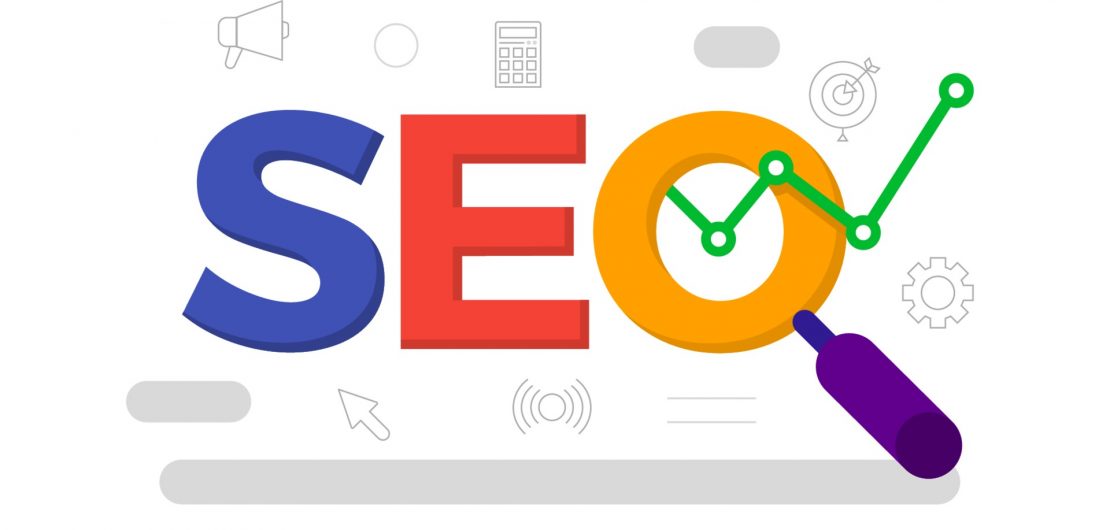
Optimize your website’s technical aspects to improve SEO performance. Ensure your site loads quickly, as page speed is a crucial ranking factor for Google. Use tools like Google PageSpeed Insights to identify and fix issues that might be slowing down your site. Implement a responsive design to ensure your website is mobile-friendly, as a significant portion of web traffic comes from mobile devices.
Secure your website with HTTPS, as Google prioritizes secure sites in search rankings. Make sure your website’s URL structure is clean and descriptive, making it easier for search engines to crawl and index your pages. Create and submit an XML sitemap to Google Search Console to help search engines understand your site’s layout and content.
Acquire high-quality backlinks from reputable websites to improve your site’s authority and trustworthiness. Engage in outreach to industry blogs, design magazines, and other relevant sites to secure guest posting opportunities and collaborations. Participate in online communities and forums related to graphic design, sharing your expertise and linking back to your website when appropriate.
Leverage local SEO tactics to attract clients in your area. Create and optimize a Google My Business profile with accurate information about your agency, including your address, phone number, business hours, and a link to your website. Encourage satisfied clients to leave positive reviews on your Google My Business profile, as reviews can influence local search rankings.
Ensure your NAP (Name, Address, Phone number) information is consistent across all online directories and your website. This consistency helps search engines verify your business information and improves your chances of appearing in local search results.
Utilize schema markup to enhance your website’s search engine snippets, making them more informative and appealing to users. Schema markup can help provide additional context to search engines about your content, such as your business type, services, and customer reviews.
Regularly monitor your website’s SEO performance using tools like Google Analytics and Google Search Console. Track key metrics such as organic traffic, bounce rate, and keyword rankings. Analyze this data to identify areas for improvement and adjust your SEO strategy accordingly.
By implementing these SEO strategies, you can improve your graphic design agency’s search engine rankings, drive more organic traffic to your site, and ultimately attract more clients. Focusing on both on-page and off-page SEO efforts, along with technical optimization and local SEO tactics, will help you achieve sustained growth and visibility in search engine results. So definitely invest in your seo as part of the 7 Winning Digital Marketing Strategies For Graphic Design Agencies
Sign up for platforms like Fiverr, Upwork & Freelancer
Signing up for platforms like Fiverr, Upwork, and Freelancer can significantly expand your reach and help you attract new clients for your graphic design agency. Here’s how you can effectively utilize these platforms to build your brand and secure more projects.
Start by creating detailed and professional profiles on each platform. Your profile should include a clear and engaging description of your services, highlighting your expertise, experience, and unique selling points. Make sure to upload a professional photo and a portfolio showcasing your best work. This visual representation is crucial in convincing potential clients of your capabilities.
On Fiverr, define your services in specific “gigs.” Each gig should focus on a particular aspect of graphic design, such as logo design, brochure creation, or social media graphics. Write clear and concise gig descriptions, set competitive prices, and use high-quality images to illustrate your offerings. Consider creating packages that offer varying levels of service, from basic to premium, to cater to different client needs and budgets.
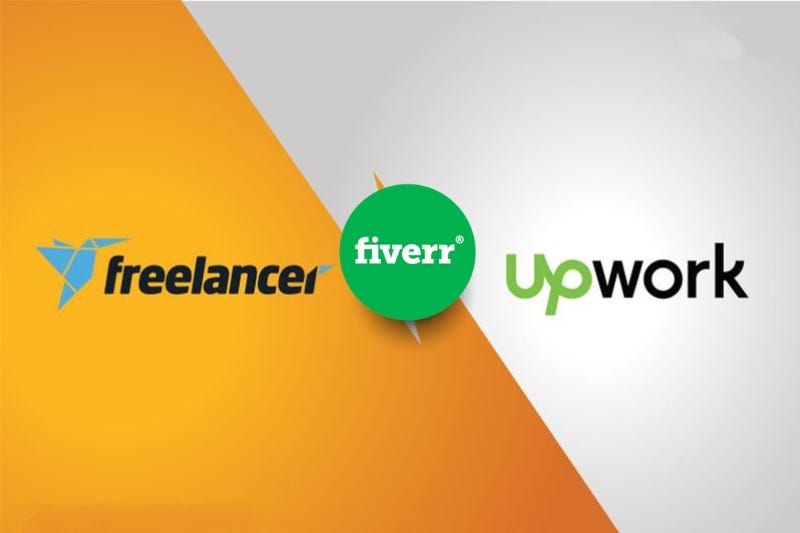
For Upwork, start by taking skill tests relevant to graphic design to boost your credibility. When applying for jobs, tailor each proposal to the client’s specific requirements. Highlight how your skills and experience align with their project needs, and include samples of relevant work. Craft personalized cover letters that demonstrate your understanding of the client’s objectives and how you can help achieve them. Be professional and responsive in your communications to build trust and rapport with potential clients.
On Freelancer, participate in contests to showcase your skills and gain visibility. Winning or even participating in contests can enhance your profile and attract more clients. When bidding on projects, carefully read the project descriptions and provide detailed proposals that address the client’s requirements. Offer competitive pricing but also ensure that your rates reflect the quality of your work.
To maximize your success on these platforms, focus on building strong relationships with clients. Deliver high-quality work on time and exceed client expectations to receive positive reviews and ratings. These testimonials are crucial for building your reputation and attracting more business. Encourage satisfied clients to leave detailed reviews and provide feedback on your services.
Continuously update your profiles with new work samples and client testimonials to keep them fresh and relevant. This ongoing effort shows potential clients that you are active and committed to delivering top-notch services.
Engage with the community on these platforms by participating in forums and groups. Sharing your expertise and helping others can increase your visibility and position you as a knowledgeable and reliable professional in the graphic design field.
Utilize the platforms’ analytics tools to track your performance. Analyze which gigs or services are most popular, which proposals receive the most responses, and other key metrics. Use this data to refine your offerings and marketing strategies.
Diversify your approach by not relying solely on these platforms. Promote your presence on Fiverr, Upwork, and Freelancer through your social media channels, website, and other marketing efforts. This cross-promotion can drive more traffic to your profiles and increase your chances of securing projects.
By effectively utilizing Fiverr, Upwork, and Freelancer, you can expand your client base, enhance your online presence, and grow your graphic design agency. Focus on creating compelling profiles, delivering exceptional work, and engaging with the community to build a strong reputation and attract more clients. This is the most underrated strategy in the 7 Winning Digital Marketing Strategies For Graphic Design Agencies
Hire a full service digital marketing agency like Clickyowl
Conclusion on 7 Winning Digital Marketing Strategies For Graphic Design Agencies
In conclusion, implementing these seven winning digital marketing strategies can significantly enhance the success of graphic design agencies in today’s competitive landscape.
- Optimizing SEO: By strategically incorporating keywords, creating high-quality content, and improving technical aspects, graphic design agencies can boost their visibility on search engines and attract more organic traffic.
- Harnessing Social Media: Leveraging platforms like Instagram, Facebook, and LinkedIn enables agencies to showcase their work, engage with their audience, and build a strong online presence. Consistent and engaging content helps foster connections and attract potential clients.
- Utilizing Paid Advertising: Platforms like Google Ads, Facebook Ads, and Instagram Ads offer powerful targeting options to reach specific audiences. Investing in targeted ad campaigns can drive traffic, generate leads, and increase conversions effectively.
- Creating Compelling Content: Producing high-quality and relevant content, such as blog posts, case studies, and videos, establishes expertise, educates the audience, and attracts potential clients. Compelling content showcases the agency’s capabilities and builds credibility.
- Building a Strong Website: A well-designed and user-friendly website serves as the hub of the agency’s online presence. Optimizing the website for speed, mobile responsiveness, and user experience ensures that visitors have a positive impression and can easily find the information they need.
- Engaging with Email Marketing: Email marketing remains a powerful tool for nurturing leads, promoting services, and retaining clients. Crafting personalized and valuable email campaigns helps agencies stay connected with their audience and drive conversions.
- Fostering Client Relationships: Building strong relationships with clients through exceptional service, clear communication, and ongoing support is essential for client retention and referrals. Satisfied clients become brand advocates, helping to promote the agency through word-of-mouth.
By implementing these digital marketing strategies effectively, graphic design agencies can elevate their brand, attract more clients, and achieve long-term success in the dynamic digital landscape. Through continuous optimization, adaptation to industry trends, and a commitment to excellence, agencies can stay ahead of the curve and thrive in the competitive market.



